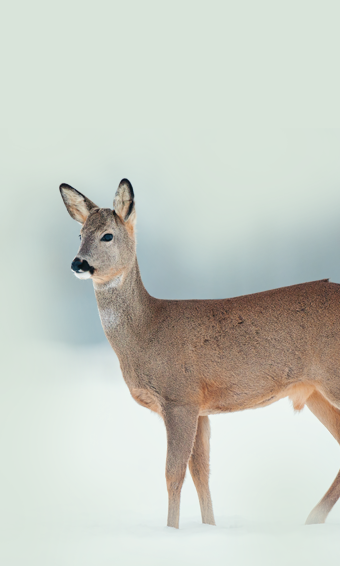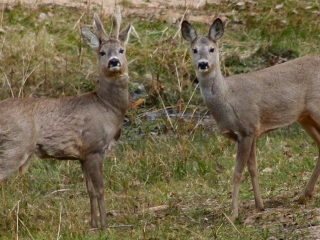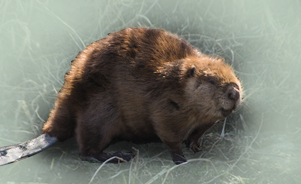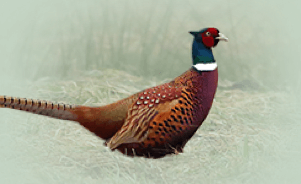The European Roe Deer Capreolus capreolus

Features
It spends about half of the day grazing and chewing. It mosly feeds on leaves and buds, and also grazes in meadows and tillage. It stays in one and the same area year round, usually where it was born. The deer live in the forests.
| Species | Mammal |
| Living space | Conifer forest, Deciduous forest |
| Size | It measures 95-135 cm in body length and 65-75 cm in shoulder height. |
| Weight | 15 - 30 kg |
Description
The European roe deer is a small species of the deer family. It has practically no tail. Their heads, when viewed from the side, are triangular in shape. Their eyes and ears are big and their fur is long, rigid and fragile. In the summer, it is red-brown and in the winter it is gray to grayish-brown. The young are a sandy colour with black and white spots on their bodies. At the age of six weeks, stheir pots become less noticeable and they completely disappear during the first shedding of their fur in October. Males (bucks) have short antlers on their foreheads. The first antlers grow in November or December and in February, they shed them. The antlers are a bone formation. An adult roe begins to grow antlers in December and, by the end of March or April, the antlers are already fully developed. The antlers are shed between September and November. In rare cases, small antlers grow also on the old female roe deer. The animal moves skillfully through dense undergrowth, is speedy during short sprints, and tires quickly during longer runs. It can pevade danger by jumping into thickets.The European Roe Deer
on the habitat Temenica
It can be seen daily, even on the border of the Ajdovska planota habitat.

Features Temenica (3)
SPECIAL ogr.




